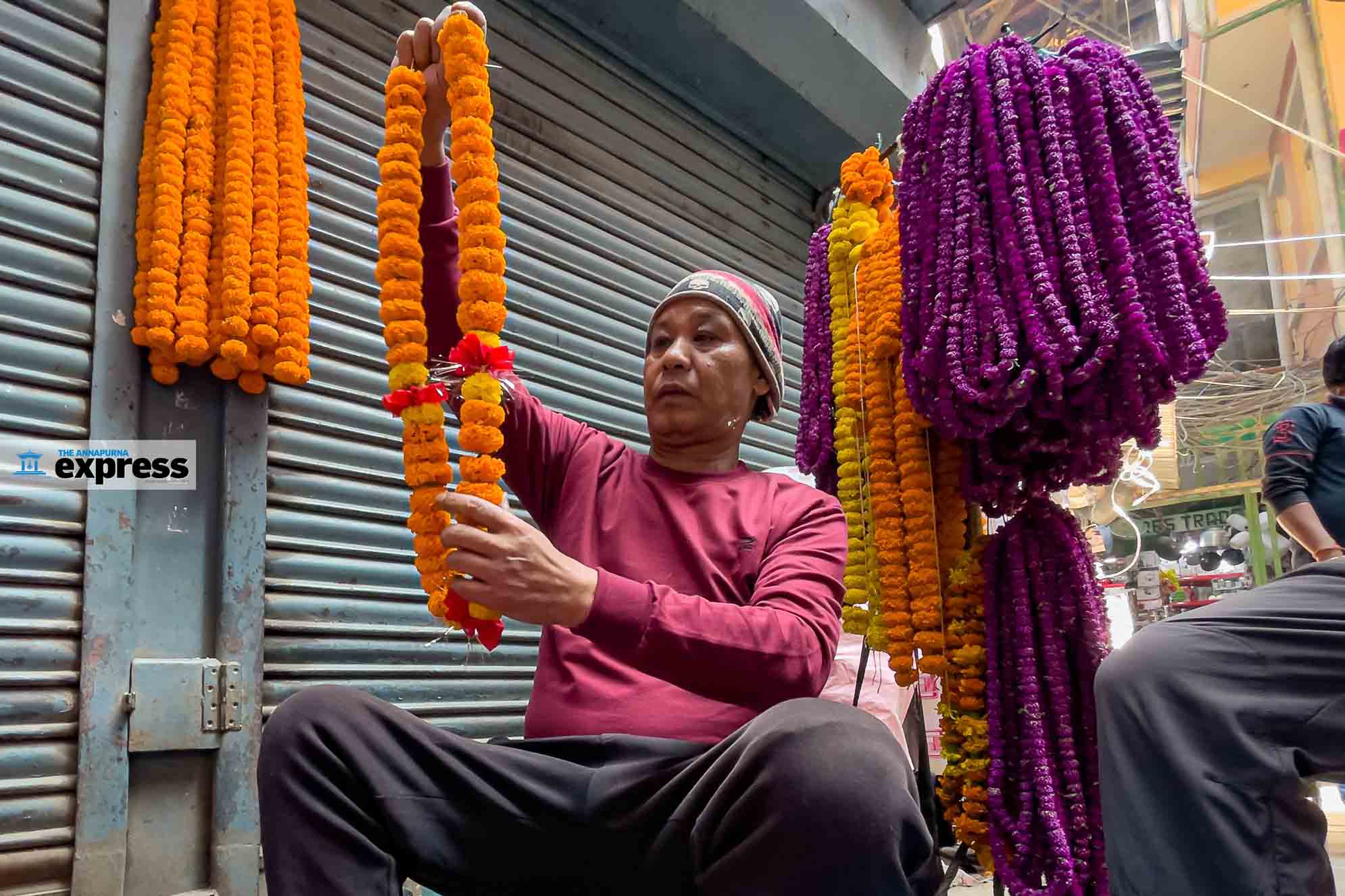Tihar is incomplete without sayapatri (marigold), makhamali (globe amaranth), and godavari (chrysanthemum). The Floriculture Association of Nepal (FAN) suggests around 2.45m garlands (usually a meter long) will be sold in the market this Tihar. Of them, around 2m will be sayapatri, 0.42m makhamali, and the remaining are godavari. Last year, around 1.85m garlands (1.5m sayapatri) were sold.
Demand for flowers increases by around 15 percent every year in Nepal. Where makhamali is concerned, Nepal is planning to export around 0.1m of garlands. But, to supply enough sayapatri in the market, florists are bringing flowers from India. 15 percent, i.e. 0.3m garlands are expected to come from India.
According to FAN, the price of sayapatri garlands will not be more than it was last year. It will be sold for Rs 60 to 70 per garland this year too. In Tihar, flowers worth Rs 130m will be sold. Annually, this transaction reaches up to Rs 400m. Unlike the previous Tihar, there is very little retail footpath business of flowers this time. “Balen business-free-footpath campaign has hampered this year’s Tihar as there is no crowd on the streets of Ason,” says Tularam Nakarmi, a street vendor.
Along with the increase in demand for flowers, commercial floriculture has expanded to 28 districts, including Kathmandu, Lalitpur, Bhaktapur, Kaski, Chitwan, Gulmi, Palpa, and Morang. Nepal currently produces 450 species of flowers commercially. They are cultivated by over 700 farmers in an area of about 157 hectares.












